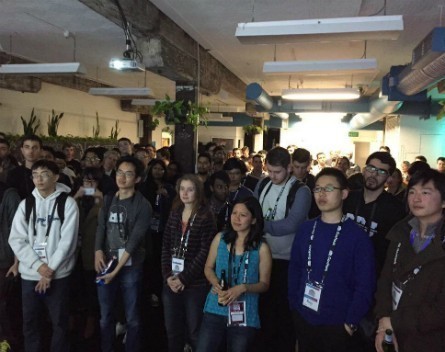Hacking the hackathons – how to make them more effective – StartupSmart

For 18 months I have been to almost every hackathon in Sydney.
I love everything about them: the random way the teams form, the focus and passion, the meeting of minds, the collaborative alchemy and the volunteers who give up their weekend to mentor and support the hackers.
And I’m not alone – everyone wants to run a hackathon to solve some problem.
But do we actually have the right design?
The biggest flaw with hackathons is the lack of sticky outcomes and longevity beyond the hackathon itself.
I have loved the ideas so much that I often search the hack website to see what happened, and apart from the winners and entries there is no information on whether any of the ideas came to life, because at present there is no structure for the winners to go to the next stage and create a startup.
Redesigning the purpose of hackathons
To some degree, I think people have misunderstood the intent of hackathons.
Hackathons serve a purpose to educate and inspire the community about civic hacking, a tool to leverage open data, get people together and have fun. Hackathons are largely run by volunteers – mostly, the end game is a hackathon – not a new product.
This is not a long-term relationship – it’s a one to three night stint where you are dedicated, immersed for 24-72 hours, and when it’s over, like adults, you say thank you and part ways till the next hackathon.
At the end of the day there isn’t an end game of get this product to market.
Hackathons are more about awareness and outputs than process and outcomes. Despite the countless great ideas and MVPs, very few see the light of day beyond the euphoria of the awards nights.
But that doesn’t have to be the end of the matter.
Using a social design
Hackathons can be reconfigured with a social design to mitigate the flaws and secure real outcomes.
The winning team of last month’s Techfugees hackathon, where we used this social design, has met with Pollenizer and the Mayor of Liverpool has committed to supporting a second app called Arrival Hub.
I will be meeting with the Council and NGOs to develop a plan on post-hack next steps, and our team is looking to connect the 11 solutions to potential investors, funders and mentors.
It has been a lot of work pre and post-hack to ensure the hackathon delivered outcomes. We have a way to go before we can do a victory dance that solutions have gone to market, but I do believe that we have created the first hack that is co-designed with the beneficiary and partnered with potential customers. While far from perfect, the design has at least started to set the prize as incubation to launch of the product.
A post-hackathon incubator
We need a place for those that have the great idea, to go to further and scope the idea’s potential.
We need a post hack incubator so that the MVPs cobbled together during the hackathon can attract mentorship and advice on developing, testing and validating the product, getting a team and accessing customers and potential investors.
A post hack incubator would be that place in between the hackathon and the co-working space – that place where you are not quite ready to quit your day job but where you can go evenings and weekends to access resources and support to take the solution to the next level.
It is important for the future of hackathons to design them differently and I believe we are getting closer with partnership and co-design as the central feature of hackathons for purpose.
Anne-Marie Elias is a speaker and consultant in innovation and disruption for social change. She is an honorary Associate of the Centre for Local Government at UTS.
Do you know more on this story or have a tip of your own? Raising capital or launching a startup? Let us know. Follow StartupSmart on Facebook, Twitter, and LinkedIn.

